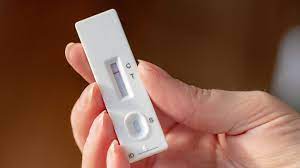Lateral flow cassettes are integral to the modern era of rapid diagnostic testing, providing a platform for easy, affordable, and efficient detection of various conditions. These devices are most commonly recognized in home pregnancy tests, COVID-19 test kits, and other point-of-care diagnostics. But what makes a lateral flow cassette so indispensable in diagnostic applications? In this article, we’ll explore their structure, functionality, applications, and future potential.
What is a Lateral Flow Cassette?
A lateral flow cassette is the external plastic housing or casing that holds a lateral flow test strip in place. The cassette ensures that the test strip remains stable, protected from environmental factors, and easy to handle. It also provides a visible window for the test results and helps regulate the proper flow of the sample across the strip.
The internal strip is the real testing material, typically consisting of a nitrocellulose membrane, sample pad, conjugate pad, and absorbent pad. These components work together to detect target analytes, such as antigens, antibodies, or other biomarkers, in various sample types like saliva, blood, urine, or swabs.
Structure of a Lateral Flow Cassette
To understand the importance of the lateral flow cassette, let’s break down its components:
- Sample Application Area
This is the designated point where a biological sample is introduced. The design ensures user-friendly sample delivery while preventing contamination or spillage. - Viewing Window
The viewing window displays the test and control lines, allowing users to interpret results easily. - Encasement for the Test Strip
The cassette encases the test strip, safeguarding it from physical damage, moisture, or dust that could affect test accuracy. - Absorbent Pads
Though part of the test strip, the cassette ensures the pads remain aligned, aiding the proper flow of the sample and reagents.
How Lateral Flow Cassettes Work
The principle of lateral flow testing is based on capillary action. When a sample is added to the test strip inside the cassette, it flows through various sections of the strip, reacting with reagents and forming visible test and control lines.
The lateral flow cassette plays a crucial role in facilitating this process. It ensures optimal positioning of the strip, guides sample application, and minimizes interference from external conditions like dust, temperature, or humidity.
Applications of Lateral Flow Cassettes
The versatility of lateral flow cassettes is evident in their widespread application across various fields:
1. Healthcare and Diagnostics
- Infectious Disease Testing: COVID-19, malaria, and HIV tests often use lateral flow cassettes for rapid diagnostics.
- Pregnancy Tests: Among the most recognizable examples, these tests detect the presence of hCG in urine.
- Drug Screening: Lateral flow devices help detect drugs or their metabolites in urine or saliva.
2. Veterinary Testing
Lateral flow cassettes are used to detect diseases in animals, ensuring prompt diagnosis and treatment.
3. Food and Water Safety
These cassettes help identify contaminants like allergens, pathogens, or toxins in food and water samples.
4. Environmental Monitoring
They are utilized to detect harmful substances, such as pesticides or heavy metals, in soil and water.
Advantages of Lateral Flow Cassettes
The popularity of lateral flow cassettes stems from several advantages:
- Portability: Compact and lightweight, making them ideal for point-of-care testing.
- Ease of Use: Simple design and operation enable anyone, regardless of training, to perform tests accurately.
- Cost-Effective: Affordable for both manufacturers and end-users, especially compared to laboratory-based methods.
- Fast Results: Results are typically available within minutes, making them critical in emergency situations.
- Minimal Infrastructure: Lateral flow cassettes do not require sophisticated equipment, making them accessible in remote or resource-limited areas.
Challenges and Limitations
While lateral flow cassettes offer numerous benefits, they do have limitations:
- Sensitivity: Compared to laboratory techniques like PCR, lateral flow tests may exhibit lower sensitivity, especially in early-stage infections.
- Quantitative Analysis: Most lateral flow devices are qualitative or semi-quantitative, providing limited numerical data.
- Environmental Impact: The disposable nature of cassettes raises concerns about plastic waste and sustainability.
Innovations in Lateral Flow Cassettes
To address some of these challenges, advancements in lateral flow cassette design are underway:
- Enhanced Sensitivity: Novel materials and reagents improve test sensitivity, enabling earlier and more accurate detection.
- Digital Integration: Smartphone-based readers for cassettes provide quantitative results, bridging the gap between rapid tests and laboratory diagnostics.
- Eco-Friendly Materials: Efforts are being made to develop biodegradable or recyclable cassettes, reducing environmental impact.
- Multiplex Testing: Innovations allow a single cassette to test for multiple analytes simultaneously, increasing diagnostic efficiency.
Future of Lateral Flow Cassettes
The future of lateral flow cassettes is promising, with continued innovation aimed at expanding their capabilities. In the healthcare sector, they are expected to play a pivotal role in personalized medicine, enabling quick and accurate point-of-care diagnostics tailored to individual patients. Additionally, their applications are likely to grow in sectors like agriculture, environmental monitoring, and bioterrorism detection.
The integration of AI and machine learning could further enhance result interpretation, enabling more precise diagnostics and data analysis. Moreover, the trend towards sustainable manufacturing will make lateral flow cassettes more environmentally friendly, ensuring they align with global goals for reduced plastic waste.
Conclusion
In the realm of rapid diagnostic testing, lateral flow cassettes have proven to be indispensable. Their simplicity, affordability, and versatility make them a cornerstone of healthcare and beyond. As technology continues to evolve, the potential of these devices will only grow, paving the way for innovative, eco-friendly, and highly accurate diagnostic solutions.
For industries and individuals alike, understanding the role and scope of lateral flow cassettes is essential to harness their full potential. From saving lives in critical healthcare settings to ensuring food safety and environmental sustainability, these small yet powerful devices are shaping the future of diagnostics.

Jennifer David is the creative force behind CelebRiches, your go-to source for celebrity financial exploits. With an unwavering passion for the entertainment industry, she delivers in-depth insights into celebrities’ net worth, combining thorough research with a captivating narrative. Explore the stars’ fiscal journeys through Jennifer’s expert lens, where finance meets fame most engagingly.
